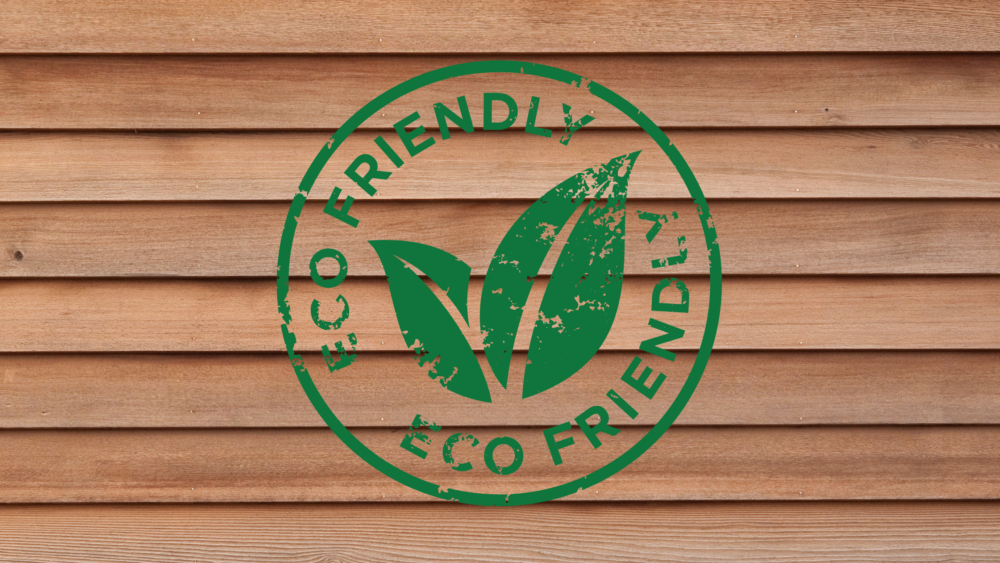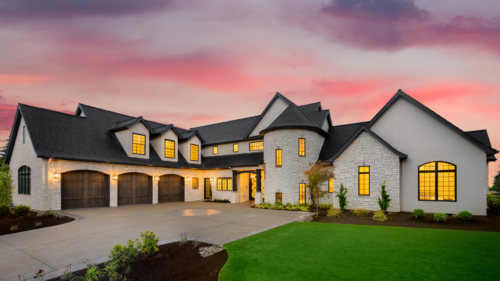Ever thought about giving your home a green makeover? Eco friendly siding isn’t just good for the planet; it’s a smart choice for homeowners looking to enhance their property’s appeal and functionality. This guide’s got your back, showing you the cream of the crop so your home shines as a model of sustainability.
Understanding the Importance of Eco-Friendly Siding
Why eco-friendly siding matters
When it comes to building or renovating your home, the type of siding you choose can have a big impact on the environment. That’s where eco-friendly siding comes in.
Eco-friendly siding is made from sustainable materials that are better for the planet. By choosing eco-friendly options, you’re reducing your carbon footprint and helping to preserve natural resources.
And get this – a bunch of eco-friendly siding options can stand toe-to-toe with traditional materials in both looks and toughness. So you don’t have to sacrifice style for sustainability.
The role of siding in energy efficiency
Did you know that the right siding can also make your home more energy efficient? It’s true.
Eco-friendly siding materials like fiber-cement and metal are great at insulating your home. This means your HVAC system doesn’t have to work as hard to maintain a comfortable temperature inside.
The result? By making a few smart changes, not only can we shave off a significant chunk from our energy bills but also step lightly on the planet. It’s a win-win.
Top Environmentally Friendly Siding Options
Fiber-cement siding: A sustainable choice
If you’re looking for an eco-friendly siding option that’s built to last, fiber-cement is a great choice. This innovative material is made from a mix of wood pulp, cement, and sand.
Fiber-cement siding is resistant to fire, pests, and extreme weather conditions. It won’t rot or warp like traditional wood siding can. Plus, it’s available in a variety of colors and styles to suit any home’s aesthetic.
Best of all, fiber-cement is a sustainable material that can be recycled at the end of its lifespan. So, what we’re looking at here is a way to cut down on waste ending up in our landfills and significantly shrink the mark we leave on the environment.
Reclaimed wood: The green alternative
For a rustic, eco-friendly look, consider using reclaimed wood siding on your home. This unique material is sourced from old barns, warehouses, and other structures that are no longer in use.
By repurposing this wood for siding, you’re giving it a second life and keeping it out of landfills. Each piece of reclaimed wood has its own character and history, adding charm and personality to your home’s exterior.
Reclaimed wood is also a renewable resource, making it an environmentally friendly choice. Just be sure to choose wood that has been properly treated and sealed to withstand the elements.
Metal siding: Durable and recyclable
Metal siding is another eco-friendly option that’s gaining popularity among homeowners. Crafted from recycled materials like aluminum and steel, this tough-as-nails material is a friend to the planet.
Metal siding is low maintenance and resistant to fire, pests, and extreme weather. It won’t rot, warp, or fade over time, ensuring your home looks great for years to come.
Plus, metal siding is 100% recyclable at the end of its lifespan. So when it’s time to replace your siding, you can feel good knowing it won’t end up in a landfill.
Evaluating the Sustainability of Different Siding Materials
Assessing material life cycle
When choosing an eco-friendly siding material, it’s important to consider its entire life cycle. This includes how the material is sourced, manufactured, installed, and disposed of at the end of its lifespan.
Look for materials that are made from renewable resources and have a minimal environmental impact during production. For example, fiber-cement siding is made from readily available materials like wood pulp and cement, while metal siding is often made from recycled content.
You’ll also want to keep in mind how long the material is going to hold up and think about what you’re going to do with it once it’s time for a change. Materials with a longer lifespan and recyclability, like metal and fiber-cement, are generally more sustainable choices.
‘Green’ certifications to look for
To ensure you’re choosing a truly eco-friendly siding option, look for materials that have been certified by reputable organizations. With these certifications, you can rest assured knowing the product stands up to rigorous environmental standards.
One certification to look for is the Forest Stewardship Council (FSC) certification, which ensures that wood products come from responsibly managed forests. Another is the Cradle to Cradle certification, which evaluates a product’s sustainability throughout its entire life cycle.
By choosing siding materials with these certifications, you can feel confident that you’re making an environmentally responsible choice for your home.
How to Choose Your Eco-Friendly Siding
Factors to consider when selecting eco-friendly siding
When you’re on the hunt for siding that’s kind to the planet, there are a handful of important things you’ll want to think about. First, think about the climate you live in and choose a material that can withstand your local weather conditions.
Next up, let’s chat about your budget and what you’re going to be spending on materials in the long run. Some eco-friendly options may have a higher upfront cost but can save you money on energy bills and maintenance over time.
Last but not least, give some thought to your home’s design vibe and pick a material that really brings out its architectural beauty. With all the eco-friendly siding choices out there, you’re bound to find one that perfectly complements your home’s style.
Cost-effectiveness vs. environmental impact
Picking out an eco-friendly siding material means you’re trying to find the sweet spot between what’s kind on your wallet and gentle on our planet. While some sustainable options may have a higher upfront cost, they can often save you money in the long run.
At the end of the day, choosing a top-notch, earth-friendly option for your siding isn’t just good for the planet – it can also be kind to your wallet over time. So don’t be afraid to spend a little more upfront for a sustainable option that will last for years to come.
The Role of Brands in Promoting Eco-Friendly Siding
James Hardie: A leader in green building materials
When it comes to eco-friendly siding, James Hardie is a brand that stands out. This innovative company has been producing sustainable building materials for over 125 years.
James Hardie’s fiber-cement siding is made from a mix of wood pulp, cement, and sand – all readily available and renewable materials. The company isn’t just talking the talk; they’re walking the walk by recycling water for their manufacturing process and carefully picking wood pulp from forests that are looked after with sustainability in mind.
James Hardie siding isn’t just a friend to the environment; it’s also built tough, ready to stand up against time and wear with impressive durability. It won’t rot, warp, or fade like traditional wood siding can, ensuring your home looks great for years to come.
Miura BoardTM: An innovative eco-friendly siding option
Another brand making waves in the world of eco-friendly siding is Miura Board. This innovative company has developed a unique siding material made from recycled paper and plastic.
Miura Board siding is lightweight, durable, and resistant to moisture, pests, and fire. It’s also easy to install and can be painted or stained to suit any home’s style.
Best of all, Miura Board is an environmentally friendly choice that diverts waste from landfills. By choosing this innovative siding material, you’re not only getting a high-quality product but also doing your part to reduce environmental impact.
FAQs in Relation to Eco Friendly Siding
What siding is most environmentally friendly?
Fiber-cement and reclaimed wood are the most environmentally friendly siding options. They are durable, recyclable, and help reduce waste.
What is the most energy-efficient siding?
Insulated vinyl siding is the most energy-efficient siding. It significantly reduces energy bills by keeping homes warm in winter and cool during summer.
Is Hardie board environmentally friendly?
Yes, Hardie board is environmentally friendly. Its long lifespan results in less waste, and its production process is designed to minimize environmental harm.
What is eco siding?
Eco siding refers to materials such as fiber-cement, reclaimed wood, and metal. These materials are eco-friendly as they help reduce pollution and conserve resources.
Conclusion
The journey towards selecting eco-friendly siding might seem daunting at first glance, but it’s actually filled with opportunities to not only uplift our homes but also make substantial contributions toward saving our planet. The truth is far from what skeptics believe – opting for materials like fiber-cement or reclaimed wood can transform everyday experiences by making chores more manageable while enriching life quality significantly.
This isn’t just about avoiding spam folders in an overcrowded market of options; it’s about finding freedom in choices that align with both personal values and practical needs. It marks the start of embracing business sustainability where you remove yourself from harmful impacts on nature yet still witness thousands coming to find solace in your eco-conscious decisions monthly & recurring.
In essence, this exploration into eco-friendly alternatives offers more than meets the eye – from contributing positively to global efforts against climate change down to improving individual lifestyles seamlessly integrated with advanced technology such as AI since its inception during early times till today. Choosing sustainable siding goes beyond aesthetics or economic gains—it symbolizes stepping into an all-new tribe committed towards lasting impact.
Need to find a contractor for your eco-friendly siding installation? Go to costguide.com to find local pros near you and compare estimates.




